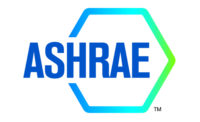A revised ASHRAE standard will aim to provide the minimum requirements for health care ventilation systems in order to accomplish environmental, infection, and odor control.
ANSI/ASHRAE/ASHE Standard 170-2013, Ventilation of Health Care Facilities, was written by ASHRAE and the American Society for Healthcare Engineering (ASHE). When the standard was first published in 2008, it was the first American National Standards Institute (ANSI) standard in the nation to specifically address ventilation in health care facilities, according to ASHRAE.
“Without high-quality ventilation in health care facilities, patients, health care workers and visitors can become exposed to contaminants through normal respiration of particles in the air,” said Paul Ninomura, chair of the Standard 170 committee. “Ventilation systems and designs for health care facilities are intended to provide a comfortable environment for patients, health care workers, and visitors while diluting, capturing, and exhausting airborne contaminants including potentially infectious airborne agents.”
Standard 170 has been in constant maintenance since 2008 and the past five years have provided an opportunity to review and further improve it. The revised standard features updates, changes, and clarifications dealing with humidity, ducted returns, recirculating rooms units and duct lining, to name just a few refinements.
One trend that almost all classes of buildings have seen on the rise lately has been energy efficiency. Health care facilities can be energy extensive buildings and energy recovery can provide significant savings. Provisions for the application of energy recovery are now specifically addressed in 170-2013. However, as the standard stipulates, if energy recovery systems are utilized, the systems cannot allow for any cross-contamination of exhaust air back to the supply airstream. Run around coils are just one example of a system that is permitted, according to Ninomura.
The standard also addresses some issues that may reduce costs to build and operate health care facilities. Standard 170 allows relative humidities as low of 20% for some rooms. This may result in smaller capacity of humidification equipment, lower operating costs, and reduced maintenance costs. The standard permits some use of plenum returns in outpatient facilities, which in turn may result in lower construction cost and operating costs.
For more information or to order a copy of the standard, visit www.ashrae.org/bookstore.



